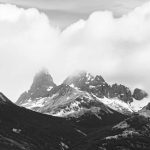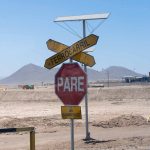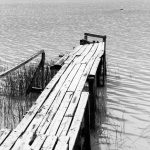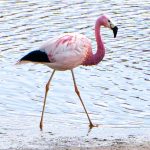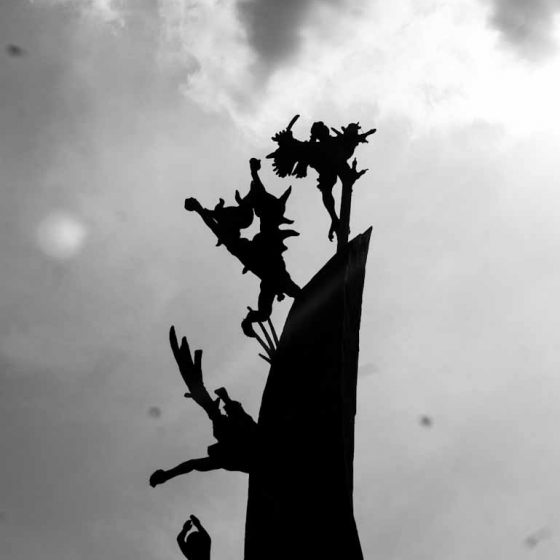Welcome to the least Latin part of Latin America. To the end of the world, literally. Chile, the country of endless natural wonders, stretching itself to the south into Patagonia, the mystical land with a ring of magic.
Let’s start with what you DON’t get when traveling to Chile: no villages with colonial architecture. No world-class museums. No Latin flavor because of the loud people and omniprescent tropical music and the bustling street markets. You also will not find any real jungle.
Instead you will find another kind of heat: dry and desert-like from Santiago upwards. Another kind of cold: wind and ferocious rains in Patagonia. Another kind of people: friendly but slightly restrained, well-organized. Very European, one might say.
That makes it of course easier and safer to travel, but takes away some of the Latin charm. What is undeniable though is that Chile, a very expensive destination by the way, also has another level of nature. From massive deserts to volcanoes, endless lakes and gletsjers, it has almost everything. And that will be the main driver to come to this end of the world.
CONTENTS
General introduction
Chile is a strange beast. Santiago is literally the center around which everything changes. The metropolis with 6-8 million inhabitants is comparable in size to Bogota. But this being Chile it is of course much better organized.
To the north the desert begins, going all the way to the Peruvian and Bolivian borders with the Atacama desert. To the west and south of Santiago the wine country finds its breeding ground in the valleys that ensure perfect growing conditions. Go down further and you will first enter the country of endless lakes, before Chile breaks up into thousands of islands and into Patagonia.
The entire eastern border is delineated by Andes mountain peaks, often volcanoes. Hopping into Argentina is often the easiest way to reach destinations in Chile, because the country is a geographically strange beast: around 4.000 kilometres from north to south, but often only 150 kilometres from west to east.
Food and drinks
Let’s put it mildly, the Chilean kitchen isn’t the most diverse, healthy or delicious one out there. There are tons of fast food outlets around, serving completos (hot dogs with sauces), churrasco (cheap beef) or sanguches (sandwiches), usually also filled with non-healthy ingredients. Not to mention the omnipresent pizzerias, which are surprisingly expensive by the way.
But there is also plenty of good affordable food. Especially sea food, because the immense coast and all the islands have the advantage of having lots of fresh fish available. There are even many salmon farms in front of the coast and in the lakes. Paile marina is a kind of soup with different kinds of small fish. Salmon is of course everywhere, as is merluza (hake) which is truly delicious here. On the more meaty side of things, parilladas (Argentinian barbecues) are everywhere as well.
For drinks pisco is the local specialty. There are many variants, but pisco sour is the most popular one and truly addictive. Wine is of course also available as it is grown locally. Mate tea is popular, it is consumed in special bowls, especially in Patagonia. Unfortunately there is not really a coffee culture in Chile: Nescafe coffee dissolved in water is standard here, only occasionally you will find proper coffee fromn proper coffee machines here.
Highlights
From north to south:
- Atacama desert: this is one of the driest places in the world, with the small village of San Pedro being the lone oasis, being dripfed water from the surrounding Andean mountains. San Pedro is your basecamp here, for excursions to sand dunes (Valle de la Muerte, Valle de la Luna), geysers (Tatio), thermal baths, flamingo colonies, or a salty lake in which you can float
- Elqui valley: several hours north of Santiago. It is therefore more accessible and is both a wine region but is also close to the southern stretch of the Atacama desert
- Santiago: the metropolis and the safest big city of Latin America. It has a vast metro system, great surrounding mountains, and some leafy luxurious neighborhoods. No world-class museums though, apart from the Museo de los Derechos Humanos which chronicles the military dictatorship of the 70s and 80s. Three nights here should be enough
- Valparaiso: the different neighborhoods on the hills of harbour town Valparaiso are lively and don’t only look good on pictures, they make for nice strolls. The city is rough around the edges though, which is made up for by sister city Vina del Mar on the other side of the mountain and can be reached by suburban train. Between Santiago and Valparaiso (a two hour journey by bus) are several famous wineries
- Maule valley: even more wine in the Maule valley, around Talca. Several mountain ranges protect this area from bad weather, which makes industrial town Talca and its surroundings a furnace though. This is a good start (or end) of a north-to-south (or reverse) journey
- lake district: there are many impressive lakes in Chile, often surrounded by volcanoes. The northern part of the lake district has volcano Villarrica, with the village of the same name as a pleasant quiet place to stay, or its touristic competitor Pucon on the borders of the same lake. The southern part of the lake district has volcan Osorno and the very active volcano Calbuco as its neighbors, pleasant Puerto Varas is your basecamp here
- Valdivia: west of the lake district and close to the pacific coast is this student town, also at the water, which has some of the best craft beer, a culture instilled of course by Germans
- also on this part of the Pacific coast are some great hidden beaches such as Caleta Condor. This is still relatively undiscovered land with hardly any tourist infrastructure. These areas can be reached most easily by minibuses from traffic hub Osorno
- Chiloe: a huge island with a distinct culture, southwest of Puerto Montt. Well worth a decent roadtrip to discover the many wooden buildings
- Carretera Austral: Puerto Montt, an ugly industrial waterside town, is the entrance gate to this 1.200 kilometre road through the northern part of Patagonia until Villa O’Higgins. Partially a dirt road, partially ferryrides, this takes you through breathtaking sceneries. One of the best, if not the best, roadtrip I ever did
- national parks: you can find national parks everywhere in Chile, but the density is extremely high in Patagonia. The national park of the same name (near Cochrane) is the newest addition. Pumalin, Cerro Castillo and of course the biggest of them all (Torres del Paine) are other great options. Torres del Paine (basecamp Puerto Natales) can be reached by beautiful ferryrides that take multiple days. Nearby Punta Arenas can be the starting point to go to Tierra del Fuego. There are even, probably from the Argentinian side, boattrips to Antarctica
Getting there
There are many ways to get to Chile, as it is surrounded by several nations. On the eastern border Argentina is the neighbor. On the northern side, over mountain passes, Peru and Bolivia can be reached.
But obviously the plane is the easiest entry for most tourists. Santiago will almost certainly be your first port of call, with its new international terminal. From here you can fly almost anywhere in Chile, and there are obviously plenty of international connections. LATAM and Sky are the two most famous carriers.
Getting around
By plane is the quickest way to get around. Buses are also a good long-distance option, at least until Puerto Montt. Turbus is a reliable choice, but there are many more companies. Beyond Puerto Montt services are more irregular and less comfortable and can often not be booked online. There are also many boat connections, amongst others Naviera Austral (Puerto Montt-Puerto Natales) and Tabsa (Caleta Tortel-Puerto Natales). Don’t forget that often it is easier and quicker to travel through Argentina.
Having a rental car is a huge advantage here, especially for visiting national parks. Tourist infrastructure is not always available and your own car is the most reliable way to reach the remote national parks.
Miscellaneous
- Weather: the wine regions, Santiago and the desert have hot summers. Atacama is one of the driest places on earth, in Santiago there was no rain in our two months. Be aware though that differences between night and day can be huge, even in the desert temperatures drop significantly. The southern part (Puerto Varas and beyond) is fresher and has moderate weather (15-20 degrees) in the summer months December-February. Wind and serious rainshowers can always occur there. In winter Santiago and surroundings can be deceptively fresh, though snow usually only falls in the surrounding mountains. In the lake district and beyond, expect unfriendly weather. Yes, rain and lots of wind. Roads also on the Carretera Austral can get bad and landslides are a frequent occurrence.
- Safety: only an issue in the busy areas of the big cities Valparaiso and Santiago. During the day pickpocketing can be an issue, during the night muggings on the deserted streets. Don’t show off your valuables, stay in crowded areas and you will be fine. Outside of the big cities there is no need to worry about safety, be cautious though when driving at night
- SIM and IMEI: highly annoying if you stay more than around three weeks. You need to register your IMEI number of your smartphone, otherwise your Chilean SIM card will be blocked. The registration process is tedious (copy of passport, copy of flight tickets, picture of IMEI number in your device) and slow
- cash costs: withdrawing money is ridiculously expensive. Banco de Estado charges 5.500 pesos (around 6 euros) as of 2023, most other banks even charge 8k. Luckily you can pay by card almost everywhere, even on markets
- high season: is in January and February. Prices are high and at touristy spots (Pucon, Torres del Paine, San Pedro de Atacama) reservations might be required



